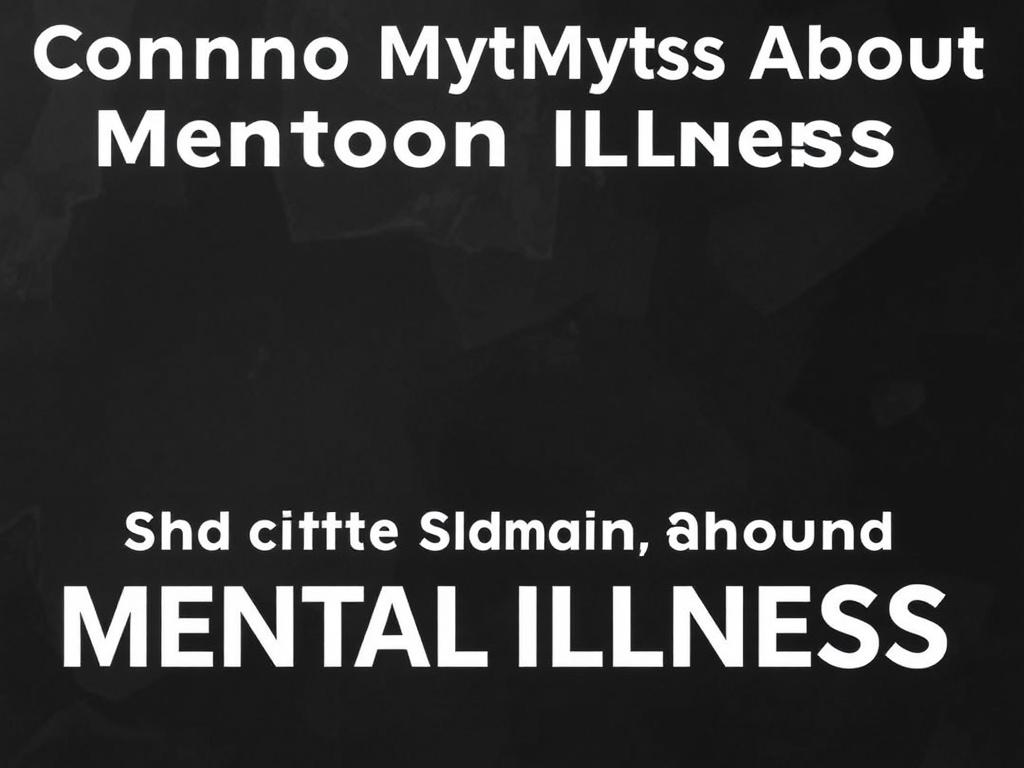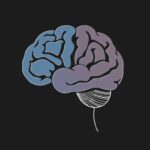Mental illness has been surrounded by misconceptions and myths for centuries, often leaving those affected feeling misunderstood and isolated. The stigma attached to mental health conditions not only hampers open discussions but also prevents many from seeking the help they need. In this article, we will explore the most common myths about mental illness, debunk them with facts, and help pave the way for a more informed, compassionate society. Understanding mental health is crucial—not only for those living with these challenges but for everyone who interacts with them daily.
What Is Mental Illness?
Before diving into the myths, it’s essential to have a clear understanding of what mental illness actually means. Mental illness refers to a wide range of mental health conditions that affect mood, thinking, and behavior. These disorders include depression, anxiety, bipolar disorder, schizophrenia, and many others. Just like physical illnesses, mental illnesses are real health conditions that require appropriate treatment and support.
Mental illness can affect anyone regardless of age, race, gender, or socioeconomic status. Often, people hesitate to discuss their challenges because of the myths surrounding these conditions, making it necessary to shed light on these misconceptions.
Why Are There So Many Myths About Mental Illness?

Mental illness has often been misunderstood partly because it deals with the mind and behavior—areas that are inherently invisible and subjective. Unlike a broken bone that can be seen on an X-ray, mental illness symptoms may not be visible, which makes it easier for myths to take root. Additionally, cultural, religious, and social influences sometimes perpetuate false ideas.
Fear of the unknown is another reason myths about mental illness abound. When people don’t understand something, they often fill in the gaps with assumptions, stories, or stereotypes. These myths can be harmful, especially when they discourage people from seeking help.
Common Myths About Mental Illness
Let’s explore some of the most prevalent myths about mental illness and unpack why they don’t hold up under scrutiny.
Myth 1: Mental Illness Is a Sign of Weakness
One of the most damaging myths is that mental illness reflects a personal weakness or lack of character. Many believe that if someone “toughened up” or “tried harder,” they wouldn’t experience these problems.
In reality, mental illnesses are complex medical conditions. They often result from a combination of genetic, biological, environmental, and psychological factors. Just as no one chooses to have diabetes or heart disease, nobody chooses to have a mental illness. It’s important to recognize that seeking treatment is a sign of strength, not weakness.
Myth 2: People With Mental Illness Are Violent or Dangerous
This is one of the most persistent myths and one that significantly contributes to stigma. Media coverage sometimes highlights violent incidents involving individuals with mental illness, which reinforces this stereotype.
The truth is that most people with mental illness are not violent. They are more likely to be victims rather than perpetrators of violence. Mental illness does not make someone inherently dangerous. On the contrary, the stress and misunderstanding often surrounding mental illness can increase a person’s distress rather than incite violence.
Myth 3: Mental Illness Is Not a Real Medical Condition
Another common misconception is that mental illness is “all in the mind” or somehow not as legitimate as physical illnesses. People sometimes think individuals are exaggerating symptoms or using mental illness as an excuse.
Science tells a different story. Conditions like depression, anxiety, and schizophrenia are linked to changes in brain chemistry, genetics, and even physical structures in the brain. Mental illnesses are diagnosed and treated by healthcare professionals using evidence-based methods. Just because the symptoms are not visible to the naked eye doesn’t mean they aren’t real.
Myth 4: Mental Illness Only Affects Adults
Many people believe that mental illness is something that only impacts adults, not children or adolescents. This belief can delay diagnosis and treatment in younger populations.
In truth, mental health disorders can and often do start in childhood or adolescence. Early signs of anxiety, depression, ADHD, and other mental health conditions can appear in young people. Recognizing and addressing these issues early can greatly improve long-term outcomes.
Myth 5: You Can “Snap Out of It” or “Get Over It”
People struggling with mental illness often hear this phrase when trying to explain their experience, which can be dismissive and frustrating.
Mental illnesses can be persistent and sometimes chronic conditions. Unlike moods that pass quickly, disorders like depression or anxiety often require treatment – which may include therapy, medication, lifestyle changes, or a combination. Simply telling someone to “snap out of it” overlooks the complexity of these disorders.
Myth 6: Therapy and Medication Are Ineffective
Some individuals doubt the value of treatment for mental illness because of myths about therapy being just “talking” or medications being addictive or harmful.
Many studies have demonstrated the effectiveness of therapy and medication in treating mental health conditions. Cognitive-behavioral therapy (CBT), psychotherapy, and various medications have helped millions manage symptoms and improve quality of life. Treatment can be personalized and adjusted based on each person’s needs.
Myth 7: Mental Illness Is Rare
Despite the growing awareness of mental health, many still believe mental illnesses are uncommon or affect only a small minority.
According to the World Health Organization, one in four people will experience a mental health condition at some point in their lives. This means mental illness is prevalent and impacts a significant portion of the population. By understanding this, we can foster empathy and inclusiveness in our communities.
Debunking the Myths: Important Facts About Mental Illness
Now that we’ve covered common myths, let’s take a look at some crucial facts to counteract these misunderstandings.
| Myth | Fact |
|---|---|
| Mental illness is a sign of weakness | Mental illness is a medical condition affected by genetics, brain chemistry, and environment. |
| People with mental illness are violent | Most individuals with mental illness are non-violent and more likely to be victims. |
| Mental illness is not a real illness | Scientific research shows mental illness involves real psychological and biological changes. |
| Mental illness only affects adults | Mental illness can begin at any age, including childhood and adolescence. |
| You can “snap out of” mental illness | Treatment, patience, and ongoing support are often necessary for recovery. |
| Therapy and medication don’t work | Many people find relief and improvement with proper treatment plans. |
| Mental illness is rare | Mental health conditions are common, affecting millions globally. |
How Myths About Mental Illness Harm People
Myths about mental illness don’t just result in misinformation—they cause real harm. When society believes falsehoods such as “mental illness is a weakness” or “mentally ill people are dangerous,” it fosters an environment of discrimination and exclusion. These myths contribute to stigma, which can lead to barriers in employment, social relationships, and access to healthcare.
People may suffer silently due to fear of judgment, delaying or avoiding treatment. In some cases, myths may even negatively influence policies and funding around mental health services. Challenging these myths is essential not only for individuals struggling with mental illness but for creating healthy, supportive communities.
Signs You Might Believe a Mental Illness Myth
Sometimes, we don’t even realize we hold these misconceptions. Reflect on the following questions:
- Do you think someone with depression just needs to “think positive” to feel better?
- Are you afraid to be around people with mental health conditions?
- Do you feel uncomfortable talking about mental illness?
- Have you ever blamed someone for their mental health struggles?
- Do you assume therapy or medications don’t really help?
If you answered “yes” to any of these, it’s okay. We all hold biases and learn from the culture around us. The key is to open your mind, seek factual information, and grow in understanding.
Ways to Help End the Stigma Around Mental Illness

Combatting myths about mental illness requires effort from every corner of society. Here are some ways you can contribute to a more informed and supportive world:
- Educate Yourself and Others: Learn accurate information about mental health and share it with friends and family.
- Speak Openly: Normalize conversations about mental illness to reduce embarrassment or fear.
- Support Those Affected: Be compassionate and offer help to people living with mental illnesses.
- Challenge Stereotypes: Correct misconceptions when you hear them in the media or social circles.
- Promote Mental Health Resources: Encourage use of professional support services and hotlines.
- Advocate for Policy Change: Support legislation that improves access to mental health care.
Mental Health Resources You Can Share
Sharing trusted resources is a powerful way to combat myths and encourage help-seeking behaviors.
| Resource Name | Description | Website |
|---|---|---|
| National Alliance on Mental Illness (NAMI) | Provides education, support, and advocacy for mental illness. | nami.org |
| Mental Health America (MHA) | Focuses on prevention, early identification, and intervention. | mhanational.org |
| Substance Abuse and Mental Health Services Administration (SAMHSA) | Offers treatment locators and helpline for crisis situations. | samhsa.gov |
| World Health Organization (WHO) – Mental Health | Provides global information about mental health and illness. | who.int/mental_health |
Understanding Mental Illness: A Journey Toward Compassion
Dispelling myths about mental illness is more than just correcting falsehoods—it’s about opening hearts and minds to the reality of millions who live with these conditions. When we move beyond stereotypes and misconceptions, we create a society where mental health is prioritized, respected, and supported just as much as physical health. This journey requires empathy, education, and ongoing conversations that break down barriers.
How You Can Make a Difference
You don’t need to be a mental health professional to help change the narrative. Simple steps like listening to someone’s story, offering nonjudgmental support, or advocating for inclusive policies can have a profound impact. Everyone can contribute to ending stigma and ensuring that mental illness is understood and treated with the seriousness it deserves.
Summary of Key Facts vs Myths
- Mental illness is treatable and manageable with the right care.
- People with mental illness deserve empathy, not fear or prejudice.
- Early intervention leads to better long-term outcomes.
- Mental health is an essential part of overall health.
By learning and sharing the truth, we can dismantle the myths about mental illness and build a healthier, more compassionate world for everyone.
Conclusion
The common myths about mental illness have long clouded public perception and hindered progress toward better mental health care and understanding. These misconceptions—from believing mental illness indicates weakness to the idea that therapy and medication don’t work—are not only inaccurate but deeply harmful. Mental illness, like any physical illness, requires compassion, appropriate treatment, and support from society. By educating ourselves, challenging stigma, and approaching mental health with empathy, we can break down these myths and create a world where everyone feels safe to seek help and share their experiences. Ending these myths is not just about awareness—it’s about respect, solidarity, and the belief that mental health matters for us all.




















